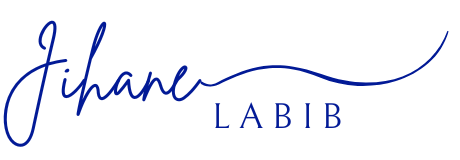– Le Matin
1) Key Success Factors
A learning organization is defined bythe active participation of all employees in the production process(products and/or services), guided by a shared sense of responsibility and commonvalues.
What sets a learning organization apartis its commitment to lifelong learning as a central value andoperational principle. Learning is practiced consistently at all levels:
- By individuals
- Across teams and departments
- Between hierarchical levels
- And with external stakeholders (clients, suppliers)
The goal? To continuously transform and evolvein ways that improve satisfaction for all—partners, clients, and employeesalike.
The cornerstone of this strategy is humancapital. For a learning organization to succeed, team engagement iscritical. The spirit and essence of continuous learning must be embeddedin the company culture, carried by every person from the bottom to thetop of the pyramid.
Other key enablers include:
- Financial and technological resources
- Knowledge management systems
- A culture of innovation
2) The Five Pillars of a Learning Organization
According to Peter Senge, in hisrenowned book “The Fifth Discipline: The Art & Practice of the LearningOrganization”, a learning organization is built on five main pillars:
• Systems Thinking
This is a conceptual framework thatencourages people to view the organization as an interconnected wholerather than in silos. It’s about understanding the relationships, feedbackloops, and patterns across the system.
• Personal Mastery
This refers to each individual’s commitment to ongoingself-development. Organizations with high levels of personal masteryhave a competitive edge because their people learn faster.
While training and development help cultivate personal mastery, itcannot be imposed. It must become a natural part of day-to-day life.
Through coaching, knowledge transfer,and mentoring, personal learning becomes organizational learning.
• Mental Models
These are the deeply held beliefs andassumptions that guide how people interpret their work and environment.
To become a true learning organization, these models must be questionedand updated continuously. Companies must move beyond rigid norms andmethods and embrace a culture that encourages change, research, andinnovation.
• Shared Vision
Establishing a shared vision is vital toengage employees and align them with the learning journey. It instills a collectiveidentity that fuels motivation and initiative.
The best visions are those adopted at everylevel, not just dictated top-down. Effective vision-sharing processes arekey.
• Team Learning
The collective knowledge of a team—the resultof individual learning—is a source of unique and strategic competitiveadvantage.
A learning organization fosters:
- Open interdepartmental communication
- Fluid knowledge circulation
- Constructive dialogue and reflection
It also establishes knowledge managementsystems for:
- Creating
- Acquiring
- Sharing
- Storing
- Applying knowledge effectively across the company.
3) Benefits of Becoming a Learning Organization
- Continuous innovation and market adaptability
- Improved handling of external constraints
- Enhanced ability to align resources with customer needs
- Ongoing improvement in product and service quality
- Greater employee engagement and retention
- Stronger corporate brand and employer reputation, thanks to a people-focused culture
4) Recommendations from the Coach
Corporate culture isessential for any organization. It shapes
- Your identity
- Your management style
- Your competitive edge
- Your attractiveness to talent
Despite being rarely formalized, cultureplays a strategic role. It often shows up in informal ways:
The climate, the tone, the unspoken rules, and the rituals.
The coach plays several roles here:
- As a facilitator for shaping culture in young companies
- As a catalyst in mature organizations to keep culture alive and evolving
- As a guide to ensure widespread buy-in
Coaching in this context respects the complexityof systems and aims to redefine culture by deepening theunderstanding of shared meaning, values, and vision—all to enable theemergence of collective intelligence.
Whether from the top-down or bottom-up,the cultural transformation process depends on the company’s structure andreadiness.
The coach’s mission is to:
- Help define the company’s core values and cultural identity
- Support communication and integration
- Guide leadership to live and embody the values of a learning organization


